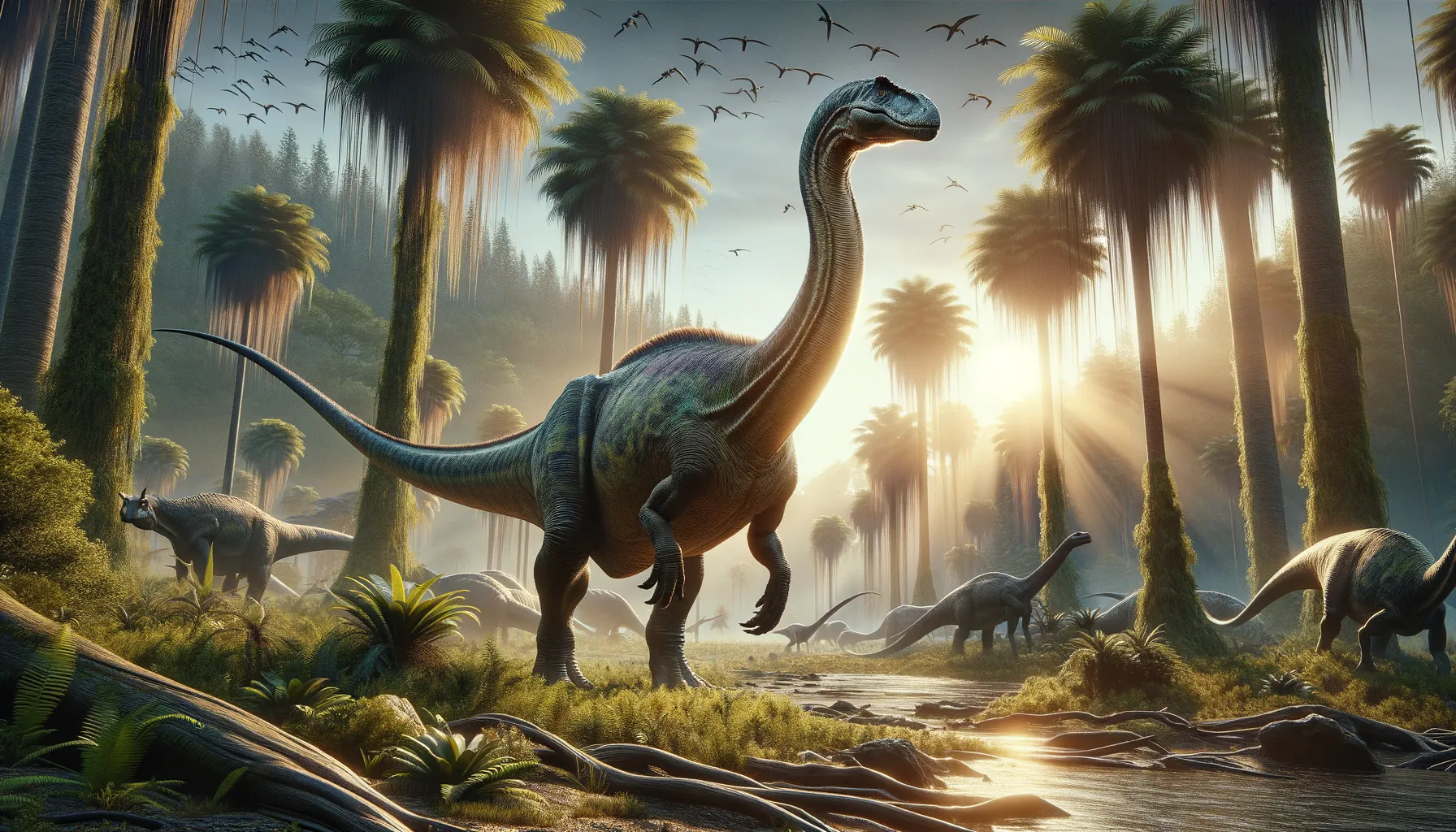
Seismosaurus
The gentle giant of the dinosaur world.
Period
Cretaceous
Length
Could grow up to around 110 feet long.
Height
About 20 feet tall at the hips.
Weight
Estimated to be around 40 to 50 tons.
Seismosaurus was a long-necked herbivore known for its incredible size, thought to be one of the longest dinosaurs. Found mainly in the Late Cretaceous period, this dinosaur had a whip-like tail and traveled in herds across what is now North America. Standing tall among the tall vegetation, it used its long neck to reach food. Its massive size provided protection against carnivorous predators.
Diet
Seismosaurus was a herbivore, feeding on plants. It likely consumed vast amounts of vegetation daily using its long neck to reach high leaves.
Hunting
As a plant-eating dinosaur, Seismosaurus did not hunt. Instead, it grazed over wide areas to satisfy its dietary needs.
Environmental challenges
Seismosaurus faced environmental challenges such as changing climates and food availability. It inhabited a world that was shifting due to tectonic and volcanic activity. Keeping up with its massive dietary needs could be challenging during dry seasons. Competition for food with other herbivorous dinosaurs also posed a challenge.
Speed
It moved at a slow pace, likely a few miles per hour.
Lifespan
It is estimated to have lived for several decades.
First discovery
Discovered in New Mexico in the 1980s.
Fun Facts
- Seismosaurus, meaning 'earth-shaking lizard', was one of the longest dinosaurs that ever lived.
- It lived during the Late Jurassic period, around 150 million years ago.
- Seismosaurus is believed to have been over 100 feet long, almost the length of three school buses!
- This dinosaur had a long neck and tail, which helped it reach high vegetation and balance its massive body.
- Seismosaurus weighed an estimated 30 to 50 tons, similar to a herd of large elephants.
- Fossils of Seismosaurus have been found in what is now the southwestern United States.
- Its enormous size likely deterred predators, keeping Seismosaurus safe from most attacks.
Growth and Development
Seismosaurus experienced a prolonged growth period, reaching full size over several decades. Like other large dinosaurs, they likely grew by continually adding new layers of bone. Juvenile dinosaurs had to avoid predators before reaching a size that deterred most threats. Their size required significant food intake to sustain growth.
Habitat
Seismosaurus lived in what is now North America, in areas that were forested with large plants. These dinosaurs preferred habitats with abundant vegetation and water sources. Floodplains and river valleys were ideal for supporting their massive herds.
Interaction with other species
Seismosaurus interacted with other herbivores, sharing grazing areas with different species. Predator-prey interactions would have been mostly defensive, as its large size deterred most carnivorous threats. Mutual spacing with other large herbivores prevented food competition.
Natural lifespan
Considering its size and growth rate, it could live for many decades.
Reproduction
Seismosaurus likely reproduced by laying eggs, as with other dinosaurs. Nesting sites would have been chosen carefully to protect the eggs from predators. Parental care, if any, is not well-documented but may have involved guarding the nesting area.
Social behaviour
Seismosaurus may have traveled in herds, which would offer protection against predators. They possibly engaged in communal grazing, maintaining social bonds within the group. These herds migrated together in search of food and water, which was essential for survival.
Fossil locations
Seismosaurus fossils have primarily been found in the southwestern United States, especially in New Mexico. Known fossil sites are rich in Late Cretaceous deposits. The remains are often incomplete, making precise reconstructions challenging.
